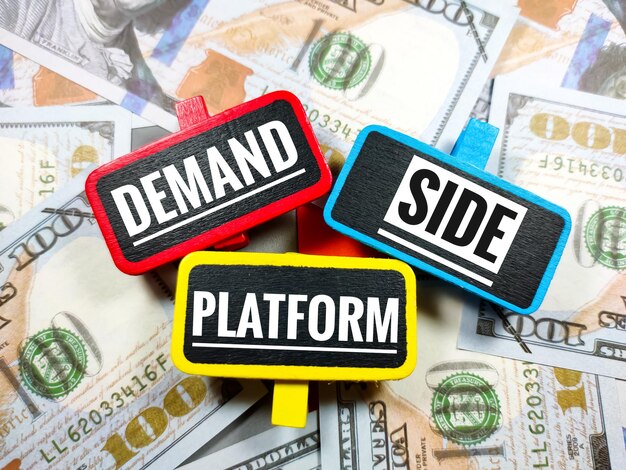Redefining Advertising: The Cutting-Edge World Of DSP Platforms

In the dynamic landscape of digital marketing, the emergence of DSP (Demand Side Platform) technology has revolutionized how advertisers connect with their audiences.
This comprehensive guide aims to demystify the concept of a DSP platform, illustrating its significance in the modern advertising ecosystem.
Understanding DSP Platforms
At its core, a DSP platform is a sophisticated software system that enables buyers of digital advertising inventory to manage multiple ad exchange and data exchange accounts through a single interface. This technology streamlines the process of purchasing ads, offering real-time bidding on multiple sources of inventory.
The Mechanics Of DSP Platforms
A Demand Side Platform functions by allowing advertisers to buy impressions across a range of publisher sites. The prices for these impressions are determined through real-time bidding, which occurs in milliseconds, as a user loads a webpage. This efficiency not only saves time but also ensures that advertisers are paying a fair price for their digital ads.
The Role Of Data In Demand Side Platform
Data is the lifeblood of DSP. These systems leverage data to make informed decisions about where and when to purchase ad space. By analyzing user behavior, demographics, and other relevant metrics, DSPs can target ads more effectively, ensuring that they reach the most appropriate audience.
The Advantages Of Using A DSP Platform
- Efficiency and Automation: These platforms automate the ad-buying process, reducing the need for manual negotiations and placements. This automation leads to greater efficiency in ad spending and time management.
- Targeted Advertising: With access to vast amounts of data, DSPs can target specific audiences with incredible precision, increasing the likelihood of ad relevance and engagement.
- Real-Time Analytics: DSP platforms provide real-time analytics, allowing advertisers to adjust their campaigns on the fly based on performance data. This immediate feedback loop is invaluable for optimizing advertising strategies.
- Cost-Effectiveness: Through real-time bidding, DSPs ensure that advertisers pay the best possible price for ad space, which can lead to significant cost savings over traditional advertising methods.
- Wide Reach: DSPs have access to a vast array of ad inventories across many websites and apps, offering advertisers unparalleled reach in the digital space.
Challenges And Considerations
While DSP platforms offer numerous benefits, there are challenges to consider:
- Complexity: The complexity of DSP technology can be daunting, especially for newcomers to digital advertising.
- Data Privacy: With the increasing concern over data privacy, advertisers using DSPs must be vigilant about adhering to privacy laws and regulations.
- Ad Fraud: The digital advertising space is susceptible to fraud, and DSPs are not immune. Advertisers need to be aware of this risk and work with reputable DSP providers.
Choosing The Right DSP Platform
Selecting the right DSP platform depends on several factors, including the specific needs of the advertiser, the level of support required, and the budget.
Key considerations include:
- User Interface: A user-friendly interface is critical for efficiently managing campaigns.
- Data Integration: The ability to integrate with existing data sources and tools is essential for a seamless workflow.
- Support and Training: Especially for those new to DSPs, robust customer support and training resources are valuable.
- Cost Structure: Understanding the pricing model of the DSP is crucial to ensure it aligns with the advertising budget.
Emerging Trends
As the digital advertising landscape evolves, DSP platforms are not just adapting but also leading the charge in innovation. The future of these platforms is shaped by several emerging trends that promise to redefine how advertisers connect with their audience. Here, we delve into these trends and their potential impact on the world of digital advertising.
Enhanced Integration With Emerging Technologies
One of the most significant trends is the integration of DSP platforms with emerging technologies like augmented reality (AR) and virtual reality (VR).
As these technologies become more mainstream, advertisers will have novel ways to engage with audiences. For instance, AR and VR can offer immersive ad experiences, making brand interactions more engaging and memorable. Demand-side platforms that can seamlessly incorporate these technologies will provide advertisers with a competitive edge.
Advancements In Predictive Analytics
Another area where DSP platforms are set to evolve is in predictive analytics. By leveraging advanced algorithms and machine learning, the DSP platform can predict consumer behavior with greater accuracy.
This capability will enable advertisers to anticipate market trends, consumer needs, and the effectiveness of ad campaigns. As a result, advertisers can optimize their strategies proactively, leading to better ROI and customer engagement.
Focus On Privacy-First Advertising
With increasing concerns over user privacy and data protection regulations like GDPR and CCPA, Demand Side Platforms are shifting towards privacy-first advertising models. This shift involves developing strategies that respect user privacy while still delivering targeted advertising.
Techniques like contextual targeting, which focuses on the context of the webpage rather than user data, are gaining traction. DSPs that prioritize user privacy while maintaining ad effectiveness will be more appealing to both advertisers and consumers.
Cross-Channel And Cross-Device Marketing
The future of DSP platforms also lies in their ability to offer more comprehensive cross-channel and cross-device marketing solutions. As consumers use multiple devices and platforms, DSPs that can track and analyze user behavior across these channels will offer more valuable insights.
This holistic approach enables advertisers to create more cohesive and effective marketing strategies that resonate with their audience regardless of the platform or device.
Enhanced User Experience And Interface
Finally, as DSP platforms become more sophisticated, there is a growing need for user-friendly interfaces. Simplifying the complexity of ad operations without compromising on functionality will be key.
Platforms that offer intuitive dashboards, easy-to-understand analytics, and streamlined campaign management tools will stand out. This user-centric approach will not only attract a broader range of advertisers but also empower them to utilize DSP capabilities more effectively.
Conclusion
DSP platforms represent a significant advancement in the field of digital advertising. By offering efficiency, precision targeting, and real-time analytics, they provide advertisers with powerful tools to reach their desired audiences effectively and cost-efficiently. As the digital landscape evolves, DSP platforms will undoubtedly continue to play a pivotal role in shaping the future of advertising.
Read Also:


























Leave A Reply